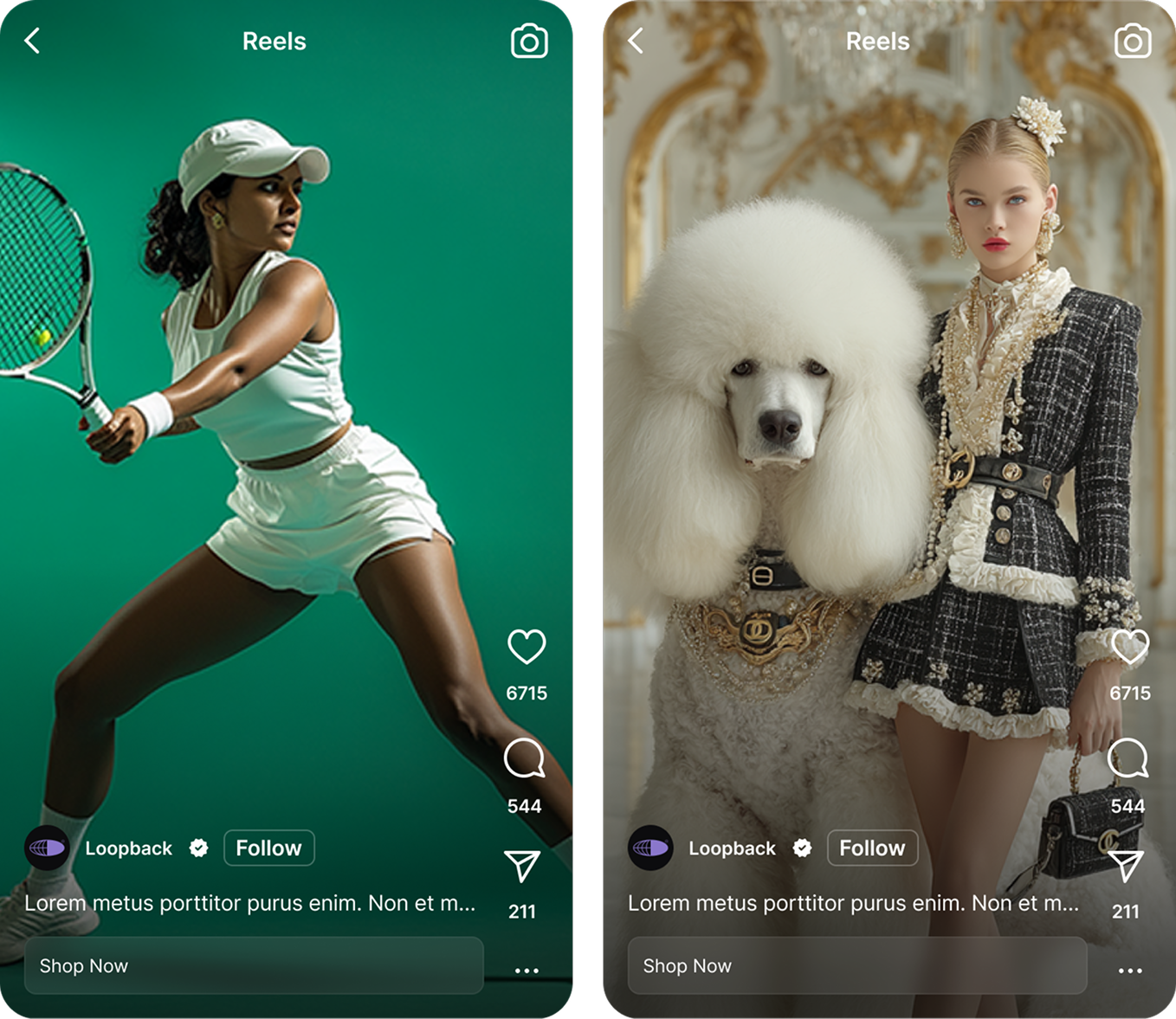How to Spot a High-Value Creator Before You Spend a Cent

How to Spot a High-Value Creator Before You Spend a Cent
If you want to avoid wasted ad dollars, learn to triage creators in ten minutes using objective signals rather than charisma or follower counts. Start with engagement-rate thresholds by size to set an immediate pass/fail: nano creators (1k–10k) should sit around 4–8% and micro creators (10k–100k) around 2–4% to be worth a closer look [1]. Use a comment-to-view ratio on long-form platforms (YouTube) — north of 3% is exceptional — and always cross-check for sudden follower spikes or bot-like behavior [2]. Fraud risk has improved but remains material; platform crackdowns lowered Instagram fraud from ~49% (2023) to ~36.8% (2024), so treat audience quality as non-negotiable [3]. Finally, prioritize consistent cadence and craft: brands routinely flag production quality and a reliable posting rhythm as predictors of sustainable performance [4]. Use these quick checks as your first gate so you only spend time negotiating with creators who demonstrate real on-platform value
1) The 10-Minute Diagnostic: Research-Backed Signals That Predict High-Value Creators
Start every discovery with a focused, repeatable checklist you can execute in 10 minutes. First, confirm engagement-rate (ER) vs. tier: if a nano creator under 10k sits below 4% or a micro under 10k–100k sits below 2%, deprioritize unless other signals compensate. Next, read 10–15 recent posts and score the comment quality: are comments topical, specific, and showing repeat names? On YouTube check the comment-to-view ratio; >3% suggests an actively invested audience. Flag accounts with sudden follower jumps, recycled comments, or identical replies across posts as possible fraud.
Beyond raw ER, look for early loyalty indicators: saves, shares, repeat commenters, and creator responses to followers. Production craft is a multiplier — clean visuals, purposeful sound design and obvious editing patterns that suit the platform make the content easier to repurpose and amplify. Geo-match the audience to your campaign targets and confirm device/language signals align. If a creator meets ER thresholds, shows credible comments, posts consistently, and has no fraud flags, they pass the 10-minute diagnostic and move to business-readiness checks.
Quick checklist (use as a form): Meets ER benchmark; YouTube C/V near or above 3%; comment quality topical and specific; consistent schedule; evidence of saves/shares; no obvious fraud; audience geos match target. If two or more checks fail, deprioritize or require a micro-test before spend.
2) Business Model Behind the Feed: Monetization Layers, Moats, and Multiplication Effects
A high-value creator thinks like a business, not just a content machine. The simplest way to spot this is monetization diversification: do they only accept sponsorships or do they also sell courses, memberships, merch, affiliate links, online events, or licensed content? A value ladder (free content → mid-ticket → high-ticket) signals a creator who can amplify brand partnerships into ongoing revenue streams and reduce reliance on single-campaign lift.
Next examine scalability signals: team support, documented SOPs, a shared editorial calendar, and automated repurposing workflows (long form → shorts → newsletter clips). These operational moats matter because brands rarely want one-off posts; they want creators who can produce predictable assets at scale and hand over repurposable cuts for paid amplification.
Financial responsibility is another differentiator. Ask whether the creator tracks CAC for their offers, knows LTV trends for repeat buyers, and how they handle rights and licensing. Poor rights hygiene is a red flag — if you can’t secure usage windows, cutdowns, or commercial rights, budget for creative rework or skip them.
The multiplication effect is the practical payoff: creators who convert content into courses, community memberships, and affiliate deals turn a single audience touch into multiple revenue vectors. Conversely, watch for red flags: single-revenue dependency, sporadic posting, no owned channels (email/CRM), and opaque usage rights. If a creator has at least two income streams and an operational process for content delivery, they’re dramatically more likely to scale with paid spend.
3) Audience, Authenticity, and Community Health: The Moat You Can’t Fake
Audience relevance and authenticity are the conversion engine. Prioritize creators whose regular content maps directly to your use cases and demonstrates lived experience, repeat series, or a clear narrative arc — these are the creators who can carry longer trust-building campaigns. Watch for community rituals: recurring live formats, hashtag challenges, or regular Q&A that generate predictable engagement spikes.
A practical check: watch 10–15 recent posts and assess comments for specificity and sentiment. If commenters reference personal outcomes, ask follow-ups, or tag friends, you’ve found depth. If comments are one-word praise or generic emojis, the audience likely won’t convert at scale.
Case in point: LYMA — Turning Authentic Menopause Stories into a 6.8× ROAS Engine demonstrated the power of structured, longitudinal storytelling. LYMA recruited midlife creators to share unfiltered 90-day experiences; the format matched an underserved audience and produced durable trust arcs that converted well. Use this pattern: seek creators who can sustain a series or multi-post journey rather than single-shot endorsements.
LYMA — Turning Authentic Menopause Stories into a 6.8× ROAS Engine
 Learn more
Learn more
Mapping: create a 1-page audience fit map for each creator — category relevance, top 3 recurring topics, sentiment score, and conversion likelihood. If two or more boxes are ‘high’, the creator becomes a short-list candidate for a pilot. If only topical fit exists without credibility cues, consider micro-tests (giveaways or product trials) before committing ad spend.
4) Systems, Ops, and Tech: How to Tell If a Creator Can Scale With You
Operational maturity separates hobbyists from scale partners. On your discovery call, ask for a walk-through of their production workflow and analytics stack. Look for calendarized production, batching, versioning for platforms, clear file ops and naming conventions, and analytics literacy — creators who use UTMs, track save/share rates, and A/B test intros are rare and valuable.
Cross-border readiness matters when you run multi-market campaigns: do they have experience tailoring messaging for local regulations and cultural nuance? Can they deliver subtitles, localized edits, or simple language variants? Creators who have previously executed in multiple markets reduce execution risk and speed time-to-launch.
Case in point: Zelesta — Scaling Influencer Marketing Across Europe used AI-driven recommendations and disciplined operations to deploy 98 creators across six EU markets, producing measurable uplift in ROAS. That campaign is a reminder: disciplined selection plus repeatable ops unlocks geographic scale and consistent performance.
Zelesta — Scaling Influencer Marketing Across Europe
 Learn more
Learn more
What to ask in a first call (no spend required): “Walk me through your production workflow and analytics stack,” “How do you tailor content by platform and market?” and “What rights do you typically grant and how do you handle whitelisting?” If answers are vague or they can’t demonstrate previous asset handoffs, budget for extra production costs or use them only for organic tests.
5) Paid Amplification Without Waste: Partnership Ads, Whitelisting, and Creator Ads
Paid amplification is the acid test of a creator’s business-readiness. Great organic engagement is necessary but not sufficient — creators must produce hooks and formats that survive the shift to paid placement and deliver acceptable CPM/CPC/CPA performance. Ask for past ad creatives and whether those assets were used as partnership ads or whitelisted placements; performance in a creator’s feed doesn’t guarantee paid success, but prior paid learnings are a strong signal.
Tactics to validate: partnership ads/whitelisting, creative variants, audience stacking, and retargeting. Confirm they can deliver raw assets, multiple cutdowns, and variant scripts. Check naming conventions, test logs, and whether they’ve worked with an ad manager to iterate on hooks — creators who maintain clear file delivery practices save you media time and reduce creative waste.
Case in point: Handyhuellen leveraged creator-based audiences and Partnership Ads to lower CPA by double digits while negotiating creator costs using platform tooling. The important signal wasn’t the exact percent but the operational discipline: they could hand over ad-ready assets, authorize whitelisting, and iterate on tests quickly. If a creator can’t provide 2–3 past ad creatives with context and naming conventions, require a content-for-rights pilot before amplification
Pre-spend validation checklist: request 2–3 past ad creatives with performance notes; verify naming conventions and test logs; confirm ability to deliver raw assets, cutdowns and hook variants; and secure clear usage windows. These steps turn paid amplification from guesswork into a controlled experiment.
6) Finding Them (For Free): Discovery, Diligence, and Shortlisting Flow
High-value creators aren’t always in marketplaces. Start on-platform: keyword searches, competitor follower lists, targeted hashtag dives, and active comment threads reveal hidden talent. Use ER thresholds and comment quality to prune your list, then validate directly on-platform; many top creators won’t appear in third-party marketplaces.
Do diligence without spend by watching 60–90 days of content velocity — consistency and experimentation are positive signs. Scan audience geos, device languages, and sentiment; ask for anonymized screenshots of story link clicks, saves and outbound CTRs where available. Build a no-cost scorecard (40% audience quality, 30% business readiness, 20% creative craft, 10% strategic fit) and rank creators objectively. This turns discovery into a predictable pipeline rather than a series of lucky finds.
Sourcing tips that scale: (1) set boolean search alerts for niche keywords, (2) pull top commenters from competitor posts, (3) export follower samples where allowed to inspect overlap, and (4) prioritize creators with at least one owned channel (newsletter or community) — ownership is a strong signal of long-term monetization potential.
7) Decision Framework and Red Flags: Commit Time, Then Capital
Use a three-phase, low-risk decision framework: Phase 1 — desktop diagnostics (ER benchmarks, fraud checks, comment audits); Phase 2 — DM/email discovery to assess workflow, rights and past paid performance; Phase 3 — micro-collab or content-for-rights pilot before committing media spend. Red flags that predict wasted spend include over-reliance on a single platform, erratic posting schedules, audience geo mismatch, no clarity on rights or delivery timelines, no history of paid performance, and inflated metrics or comment pods.
Selected case studies that inform this framework: LYMA shows how structured, longitudinal storytelling can convert underserved audiences into high ROAS; Zelesta demonstrates disciplined selection and multi-market ops; Handyhuellen proves creator-led Partnership Ads and disciplined media strategies can lower CPA and raise efficiency. Study these examples for patterns rather than numbers — they reveal the operational and creative behaviors that predict success.
Final decision rule: if a creator passes Phases 1 and 2 and you can secure rights for 1–3 paid amplifications, launch a micro-pilot with tight KPIs (CAC target, ROAS floor, and minimum asset set). Commit time first — scale capital only when KPIs consistently trend toward your target.
Appendix: What the Best Creators Exhibit (Synthesis)
Top creators combine monetization maturity (multiple revenue streams), growth potential (team and repurposing workflows), ops transparency (clear costs, CAC/LTV awareness, rights hygiene), tech enablement (automation, UTMs, analytics) and an intangible edge: mission clarity, a distinctive voice, and a community that behaves like a consumer funnel. When these signals align, you have a creator who can convert first-time buyers and compound value through owned products and paid amplification.
If you want a single takeaway: build a short, repeatable scorecard that prioritizes audience quality and business readiness ahead of follower count. Treat the first paid campaign as a structured experiment and scale only when operational and creative systems prove repeatable.
Ready to convert your shortlist into predictable performance? Book a short discovery to validate creators against this checklist and run a low-cost pilot before you scale.
Get started with The Cirqle today.
Give your team the power and speed they need to find the right partners and grow your brand.
%201.avif)






